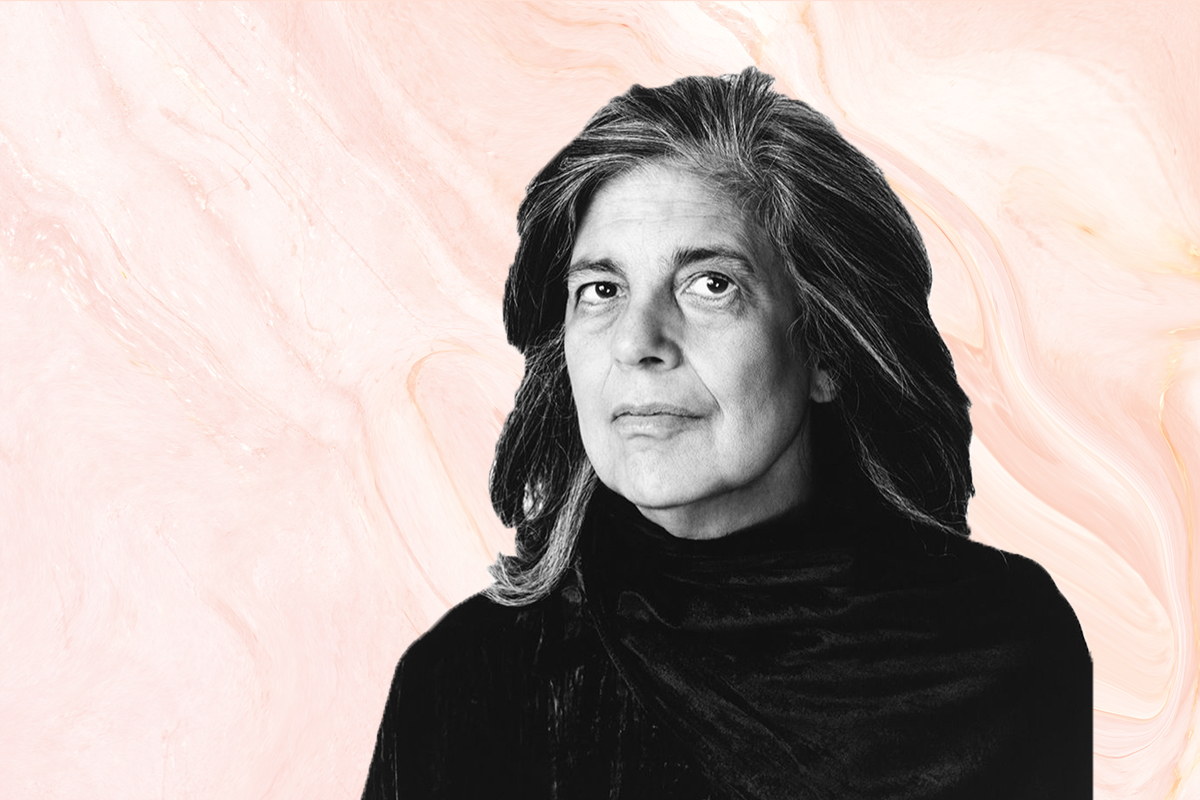Susan Sontag is the Jewish intellectual behind this year’s Met Gala theme, “Notes on ‘Camp.'” While everyone is going to be focused on the fashions (rightly so!), we thought we’d quickly give you everything you need to know about Susan Sontag herself. Because, well, she was amazing.
Sontag, who passed away in 2004, was a writer, philosopher, activist, filmmaker, and teacher. “As the only woman among the 1960s world of New York Jewish intellectuals, Sontag was both venerated and villainized, depicted as either a counter-cultural hero or a posturing pop celebrity,” the Jewish Women’s Archive explains.
Let’s dive into who Susan Sontag was:
1. Susan Sontag was born Susan Rosenblatt in 1933 in New York City. She’s the daughter of Lithuanian and Polish Jews; even though her parents were Jewish, she did not grow up religious.
2. She graduated from high school at age 15 and then studied at University of California, Berkeley before transferring to University of Chicago. She then attended Harvard, where she received her Master of Arts in philosophy.
3. At age 17, she marred writer Philip Rieff, and they had one son together — David — who would go on to edit his mom’s writing.
4. In 1995, Sontag came out as bisexual, yet, according to the Los Angeles Times, “She remained quasi-closeted, speaking to interviewers in detail about her ex-husband without mentioning her long liaisons with some of America’s most fascinating female artists.”
5. Sontag published six collections of essays, beginning with Against Interpretation in 1966, which includes the famed “Notes on ‘Camp'” essay (which was first published in 1964).
6. “Not only is there a Camp vision, a Camp way of looking at things. Camp is as well a quality discoverable in objects and the behavior of persons. There are ‘campy’ movies, clothes, furniture, popular songs, novels, people, buildings,” Sontag writes in the famed essay. “This distinction is important. True, the Camp eye has the power to transform experience. But not everything can be seen as Camp. It’s not all in the eye of the beholder.”
7. Some examples Sontag gives of Camp? Tiffany lamps, Swan Lake, women’s clothes of the ’20s, and the Cuban pop singer La Lupe.
Read the full “Notes on ‘Camp'” essay here. In the exhibit at the Metropolitan Museum of Art, there is a “square gallery where some of the 58 bullets from Susan Sontag’s 1964 essay… are illustrated with items from the museum’s collection.”
8. Not only was she a prolific essay writer, but Sontag published six works of fiction, including I, etcetera, a collection of short stories, and four novels. She also wrote four monographs: On Photography, Illness as Metaphor, AIDS and Its Metaphors, and Regarding the Pain of Others.
9. And! (Of course there’s more!) She was a playwright! She wrote several plays, including Alice in Bed.
10. She directed four films, including Promised Lands, which was filmed in Israel during the Yom Kippur War in 1973.
You can watch the whole thing on YouTube:
11. After making Promised Lands, Sontag wrote, “Film-making is nitpicking, anxiety, fights, claustrophobia, exhaustion, euphoria. Film-making is catching inspiration out on the wing. Film-making is flubbing the catch, and sometimes knowing the fool that’s to blame is yourself. Film-making is blind instinct, petty calculations, smooth generalship, daydreaming, pigheadedness, grace, bluff, risk.”
12. Sontag also directed plays, famously including her staging of Waiting for Godot in Saravejo in 1993 (when the city was under siege). Afterwards, she was declared an honorary citizen of Saravejo.
13. In an interview with Man Repeller, director Nancy Kates — who made a film about Susan Sontag, Regarding Susan Sontag — explains the impact of Sontag’s Jewishness: “Even though Sontag was not a religious person, she was really deeply connected to being Jewish in terms of identity and the Holocaust. I didn’t manage to squeeze it into the movie, but her sister told me that Susan Sontag went to synagogue when she was in high school, which I was shocked by. Like, of her own volition. Later she really associated herself with Catholicism. She didn’t have any sort of faith, as far as I can tell, but she believed in heroic gestures, which led her to go to war zones, which is kind of a crazy thing to do if you’re a writer who’s not a war correspondent.”
Here’s the trailer for the doc:
14. In her commencement address to Vassar in 2003, Sontag said, “Read a lot. Expect something big, something exalting or deepening from a book. No book is worth reading that isn’t worth re-reading.”
15. She also said, “You’ll notice that I haven’t talked about love. Or about happiness. I’ve talked about becoming — or remaining — the person who can be happy, a lot of the time, without thinking that being happy is what it’s all about. It’s not. It’s about becoming the largest, most inclusive, most responsive person you can be.”
16. Fun fact: Susan Sontag usually wrote by hand! (No typewriter or computer!)
17. “A writer is someone who pays attention to the world,” Sontag told The Paris Review.
18. The idea of Sontag reacting to the fact that her essay would be turned into a Met Gala theme is pretty great…
https://twitter.com/bowenyang/status/1124721374562590720
https://twitter.com/becbecliuliu/status/1125163481873956864
me tonight, devoting hours to watching a group of celebrities who will, inevitably, either misinterpret or wilfully ignore the #MetGala theme: pic.twitter.com/5OHW9x0PAT
— TabloidArtHistory (@TabloidArtHist) May 6, 2019
And while you’re here reading about Susan Sontag, read how the Met Gala theme is unabashedly Jewish. As Hannah Pasternak writes in the essay, “To spotlight the work of a 20th century Jewish intellectual like Sontag is, for the Jews, about equivalent to spotlighting something from the Pope.”
Image of Susan Sontag in header by Richard Avedon/The New Yorker



